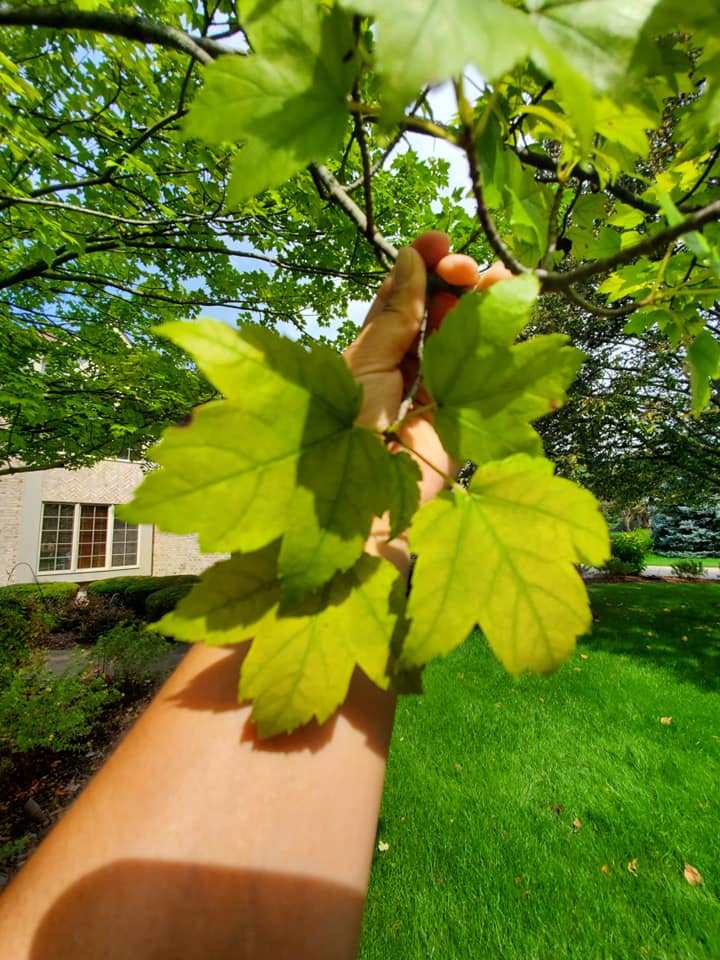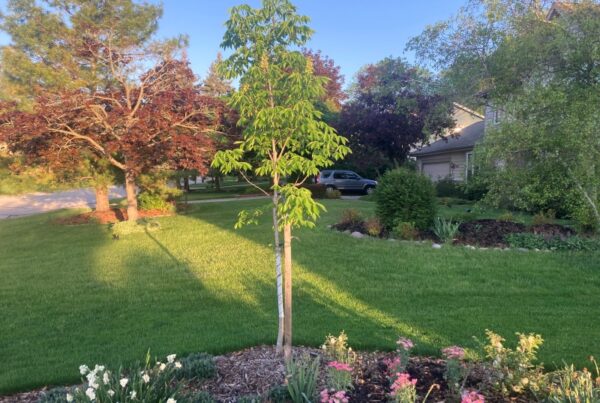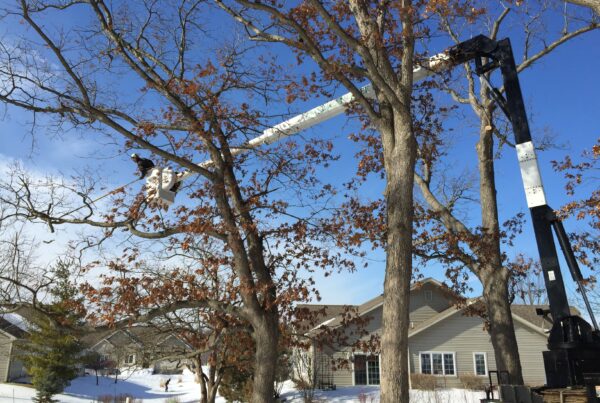Chlorosis happens when a tree lacks chlorophyll – the green pigment found in leaves to help them absorb energy.
A nutrient deficiency causing yellowing of once green leaves can occur for several reasons:
High pH levels – In southeastern Wisconsin, high alkaline soils are a common issue and that can make it difficult for trees to absorb the nutrients they need.
Drought – Southeastern Wisconsin is far below average rainfall totals so far this year, which contributes to the onset of chlorosis.
Poor drainage – Poor growth is expected if water is ponding in low areas, around the home or building foundation, and uncontrolled runoff from roofs and downspouts.
Compacted soil – Water and air need to freely move through soil and when they don’t, tree health can be severely impacted.
Several tree species commonly found in our area are susceptible to chlorosis, including:
• Various species of oak
• Red maple
• River birch
• Tulip tree
• Sweetgum
• Bald cypress
• Magnolia
• White pine
If leaves are showing signs of chlorosis, there are treatments available to get your tree back to good health. Contact American Tree Experts for a consultation today.




